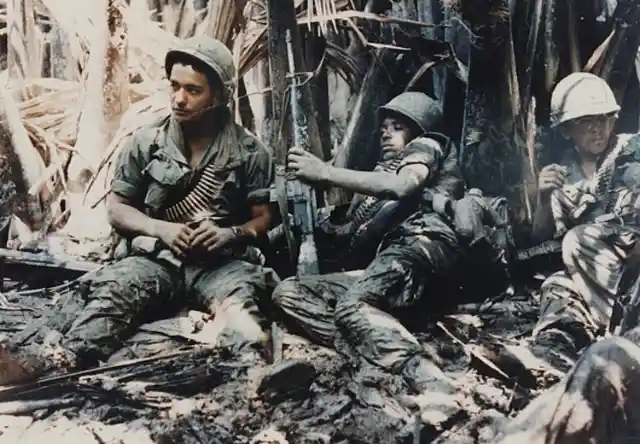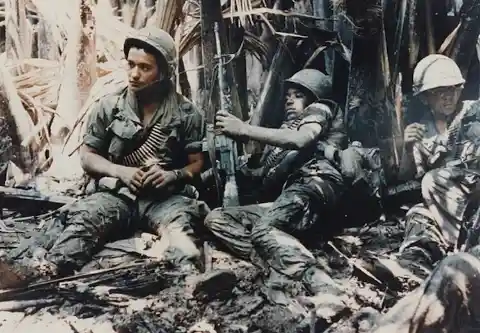A Promise Of Peace Turns Deadly
Peace talks in Vietnam, a process that lasted for years, were nearly as drawn out as the war itself. While the war brought about endless promises of stifled peace, protestors played an influential role in changing the course of history…


Richard Nixon, the 37th U.S. President, campaigned for his presidency with a pledge for peace in Vietnam. Days after he took office, peace talks commenced, but not before the launch of another U.S. Marine campaign, Operation Dewey Canyon. Thus began a disparaging pattern of peace talks peppered with military action.
In retaliation to a Viet Cong attack in South Vietnam and a deadly North Vietnamese Army (NVA) attack near a demilitarized zone, U.S. troops went on the offensive in the demilitarized zone for the first time since 1968.
As the death toll climbed to many tens of thousands, morale among soldiers took a harrowing hit. In turn, issues like drug abuse became widespread. In fact, drug use was so rampant that drug-related deaths began to surpass combat deaths.
Nixon Struggles For Domestic And Foreign Peace
Nixon’s peace efforts were continuously shot down or returned with absurd demands from Ho Chi Minh. Amid a media firestorm, Nixon felt he had no choice but to withdraw troops and began to do so in stages. He also released the “Nixon Doctrine,” which stated that the U.S. would no longer participate in ground wars, and would solely provide “assistance” to countries battling communism.
Even as more troops withdrew and hundreds of thousands of men returned home, protests in America continued. Unfortunately, Nixon’s problems did not stop there. In an attempt to expedite the end of fighting in Vietnam, the U.S. and South Vietnamese invaded Cambodia, where a group of communists had recently gained power. Americans were furious, protests again surged, and the U.S. troops ultimately withdrew.
In the late summer of 1970, the last American offensive, Operation Jefferson Glen, was initiated. Shortly thereafter, Nixon proposed a cease-fire, and troops continued to drop in number.
The Unrest Continues
Bombings were unrelenting through the new year – as were American protests. By April, the last Marine combat units finally left Vietnam. Also in 1971, The Pentagon Papers were published by The New York Times and The Washington Post. Since these contained secret information from the Defense Department, Nixon took The New York Times to court. However, the Supreme Court ultimately ruled in favor of the publications.
Nixon’s peace proposals kept coming but were routinely rejected, leading to the U.S. boycotting the Paris peace talks in 1972. Then, a massive months-long offensive occurred, which was known as the Eastertide Offensive. During this operation, hundreds of thousands of North Vietnamese soldiers tried to conquer South Vietnam. The U.S. retaliated with an airstrike by South Vietnamese soldiers, dropping Napalm bombs on civilians.
After even more concessions were made and then rescinded, negotiations again buckled. Nixon called for another relentless offensive, dropping hundreds of thousands of bombs in Hanoi for 11 straight days, killing well over 1,000 civilians.
Peace, But Not For Everyone
The Paris Peace Accords were signed on January 27, 1973, and all U.S. military personnel withdrew by the end of March. It was not a glorious homecoming, however. Not only did the public and media denounce and discriminate against the soldiers, but the returning men also had to deal with an immense lack of government support, including nonexistent GI benefits.
American protests during the Vietnam War were powerful and persistent. One cannot tie the ultimate withdrawal of troops to the protests themselves, but their long-lasting effects, such as a lack of a military draft since the Vietnam War, are undeniable.